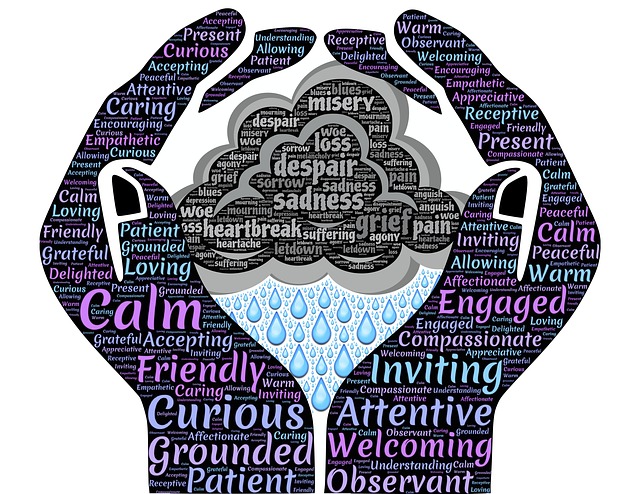Deepak Chopra on discussing how to release pain and difficult emotions stressed the connection between our physical bodies and our emotions and also the interconnectedness of all living things. He maintained that “there is no mental event that doesn’t have a biological correlate” – that is to say, that our every thought and related emotion finds expression in some form in our body. He stressed that our brain serves to integrate everything we experience – our thoughts, feelings, emotions, social interactions and the ecosystems that surround us. Deepak talked too of our entanglement with each other – how we influence each other energetically and emotionally through “limbic resonance”.
In speaking of ways to reduce physical pain in another video presentation, Deepak strongly supported the idea of regular exercise to release endorphins, meditation to take us beyond our limiting perceptions, music to reduce stress and pain and social connection and interactions to provide support. He maintained that, contrary to popular belief, alcohol and smoking increase pain rather than reduce it. He also highlighted the powerful role of biofeedback, employed by various health professionals including the Chopra Center for Wellbeing.
A seven-step process for physical healing and emotional release
In his presentation for the You Can Heal Your Life Summit, Deepak offered a seven-step process for physical healing and emotional wellbeing. The seven steps serve as an integrated approach to individual mindfulness practices that we have previously discussed on this blog.
You begin by reflecting on an interaction that made you upset or left you having to deal with difficult emotions. Then you follow the following seven steps:
- Accept responsibility: accept what you are feeling as your own, not blaming others for the way you are feeling. Without accepting responsibility, you cannot gain control over your feelings, nor can you wait for the other person to change so that you can be released from your feelings, because this will not happen.
- Feel the feeling in your body: Deepak maintains that any feeling relates to one of the energetic centres of your body, one of the seven Chakras. The location of your pain is an indicator of the Chakra involved and the unfulfilled need finding expression in that Chakra, e.g. pain around the heart region (the Heart Chakra) can signal a need for love and belongingness, while pain in the stomach region (Solar Plexus Chakra) can indicate an unmet need for stability and strength. To feel the feeling you can close your eyes and focus on the area of your body where you feel pain – and bring your awareness to it without doing anything other than being with the pain wherever it is being felt in your body.
- Name your feeling: Deepak describes this step as “labelling your feelings”. By naming your feelings accurately, you can learn to tame them. He calls accurate naming “labelling intelligently” – the more specific you can be about what you are feeling, e.g. resentment, anger, shame, the better you are able to deal with it.
- Write it down – here the aim is to express what happened from three different perspectives – your own, the other person’s perspective and a third person’s perspective – the independent observer. Deepak maintains that using this 1st, 2nd and 3rd person approach reduces the emotional energy you have invested in the conflict, improves your immune system, and lightens your emotional load because “you are not weighed down by the emotion”.
- Share it with someone: here you share both the process you used and the outcome for you with someone that you trust. It is important to accurately share the three perspectives that you have developed – avoid excusing your own behaviour and blaming the other person.
- Use a ritual release: Deepak suggests that a ritual activity that symbolises “release” reinforces your new state of equilibrium and equanimity. It can take many forms but needs to be a personal way of expressing release, e.g. using a mantra meditation, scrunching up the paper you have written on or throwing it in the river.
- Celebrate the release: again using something that is meaningful to you, e.g. a long forest walk, or mindful walking by the bay – some activity that manifests your joy and the realisation that you are moving on, no longer trapped physically or emotionally.
Reflection
The wisdom of this approach is the recognition throughout of the profound mind-body connection – In releasing our emotions, we can release pain in our bodies. It takes time to develop the self-intimacy and honesty required to defuse these emotions and the related physical pain. Persistence brings its own rewards in this endeavour as in many other endeavours. As we grow in mindfulness through mindfulness practices, meditation and reflection, we can achieve a level of consciousness that creates emotional freedom and physical ease. Deepak maintains that “all healing is consciousness”. To deepen our level of consciousness, we can make a habit of self-observation, naming our feelings and related unmet needs, and exploring creative ways to respond.
____________________________________________
Image by Nika Akin from Pixabay
By Ron Passfield – Copyright (Creative Commons license, Attribution–Non Commercial–No Derivatives)
Disclosure: If you purchase a product through this site, I may earn a commission which will help to pay for the site, the associated Meetup group and the resources to support the blog.








